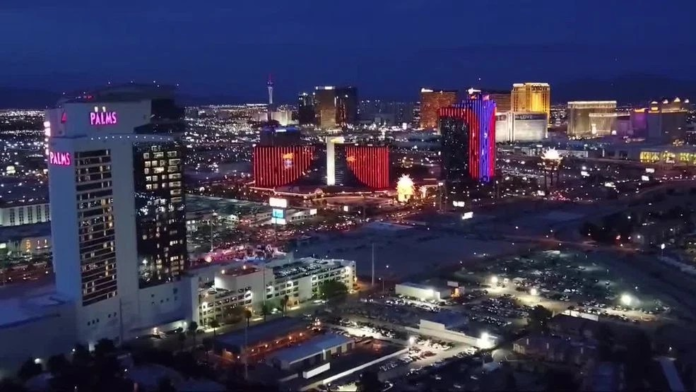Tourism Downturn in Southern Nevada: A Closer Look
Introduction
As the sun sets over the neon-lit skyline of Las Vegas, the city that once thrived on the exuberance of tourists now faces an unsettling downturn in tourism. While the iconic Las Vegas Strip has been synonymous with glamour and indulgence, many locals are voicing concerns over rising prices that have shifted the city’s economic landscape.
Rising Prices: A Local’s Perspective
Regina Knight, a local resident, embodies the frustrations echoed throughout the city. "There’s no likelihood. It’s too expensive. Everything. Fees. Everything. It’s too expensive," she laments. This sentiment reflects a broader concern among Southern Nevada residents who remember a time when Vegas was more affordable. Knight recalls her past trips where prices were reasonable, contrasting them with her experience over the last two years. “I used to come out here for vacation and prices were good, but I’ve been here for two years… so, no. It’s crazy now,” she says, clearly feeling the weight of escalating costs.
Understanding the Numbers
Despite the narratives of skyrocketing prices, a closer examination of the statistics paints a more nuanced picture. According to the Las Vegas Convention and Visitors Authority (LVCVA), the average room rate on the Strip in June was $174, while downtown hotels boasted average rates of $87 per night. Interestingly, these figures represent a slight year-over-year decrease, with downtown rates dipping and a nearly 7% decline on the Strip.
The Complexity of Pricing
Alan Feldman, a resort and gaming expert associated with UNLV’s International Gaming Institute, provides insight into the intricacies of hotel pricing. "It’s like a grease pole. It’s just constantly moving around," he notes, illustrating the dynamic nature of pricing strategies in the hospitality sector. The average daily rate may appear lower, largely due to the presence of moderately priced establishments on the Strip. However, luxury resorts leverage data analytics and market experience to optimize revenue effectively.
Feldman elaborates, “The exact same room that is $500 one night is $200 the next.” This volatility highlights how hotels are continually adjusting their inventory to align with demand. The pricing fluctuations hinge not only on consumer behavior but also on broader market trends.
The Role of Artificial Intelligence
The advancement of technology, particularly artificial intelligence (AI), is becoming increasingly pivotal in shaping pricing strategies for hotels. Feldman states, “AI is going to drive pricing decisions. Well, yeah, but in a sense, it already is.” He explains that data analytics has guided pricing for over a decade, but AI will significantly enhance this process, making it faster and more precise.
With this technological shift, the industry is poised to make data-driven decisions that could influence everything from promotional offers to seasonal pricing.
Shifting Market Dynamics
Economist Mike PeQueen observes a transformative shift in the market dynamics within Las Vegas. He notes a noticeable tilt toward luxury offerings: “The larger resorts in Las Vegas seem to be attempting to transition to a different type of market to a more luxury, more expensive offering.” This evolution has marked a departure from traditional expectations, with high-end establishments like the Bellagio and Aria reestablishing what luxury accommodations can entail.
PeQueen reflects on how perceptions have changed over time. Once considered exorbitant, prices of upwards of $600 to $700 per night are now commonplace thanks to the city’s ongoing push toward an upscale image.
Local Reactions to Parking Fees
Feldman reminisces about the early reactions when Las Vegas Strip hotels began charging for parking, a significant shift that was met with discontent from long-time locals. He notes, “It was outrageous to locals, but Californians were unfazed.” In fact, out-of-state visitors from places like Los Angeles are accustomed to similar fees, showcasing how regional differences shape consumer expectations.
As the Las Vegas tourism landscape evolves, the challenge remains: how to balance local sentiments with the city’s push for luxury and high-end experiences.
